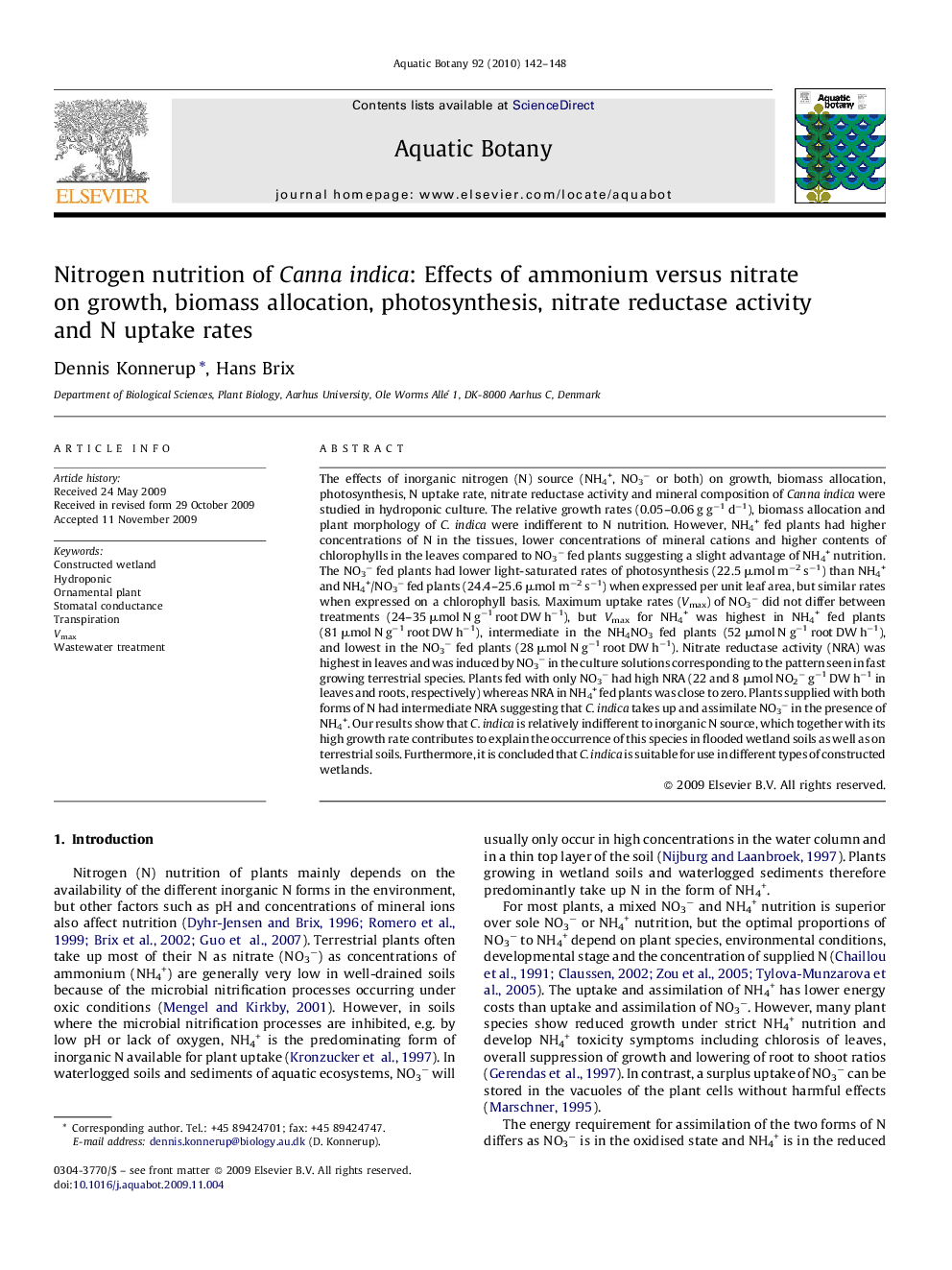| کد مقاله | کد نشریه | سال انتشار | مقاله انگلیسی | نسخه تمام متن |
|---|---|---|---|---|
| 4528346 | 1324301 | 2010 | 7 صفحه PDF | دانلود رایگان |

The effects of inorganic nitrogen (N) source (NH4+, NO3− or both) on growth, biomass allocation, photosynthesis, N uptake rate, nitrate reductase activity and mineral composition of Canna indica were studied in hydroponic culture. The relative growth rates (0.05–0.06 g g−1 d−1), biomass allocation and plant morphology of C. indica were indifferent to N nutrition. However, NH4+ fed plants had higher concentrations of N in the tissues, lower concentrations of mineral cations and higher contents of chlorophylls in the leaves compared to NO3− fed plants suggesting a slight advantage of NH4+ nutrition. The NO3− fed plants had lower light-saturated rates of photosynthesis (22.5 μmol m−2 s−1) than NH4+ and NH4+/NO3− fed plants (24.4–25.6 μmol m−2 s−1) when expressed per unit leaf area, but similar rates when expressed on a chlorophyll basis. Maximum uptake rates (Vmax) of NO3− did not differ between treatments (24–35 μmol N g−1 root DW h−1), but Vmax for NH4+ was highest in NH4+ fed plants (81 μmol N g−1 root DW h−1), intermediate in the NH4NO3 fed plants (52 μmol N g−1 root DW h−1), and lowest in the NO3− fed plants (28 μmol N g−1 root DW h−1). Nitrate reductase activity (NRA) was highest in leaves and was induced by NO3− in the culture solutions corresponding to the pattern seen in fast growing terrestrial species. Plants fed with only NO3− had high NRA (22 and 8 μmol NO2− g−1 DW h−1 in leaves and roots, respectively) whereas NRA in NH4+ fed plants was close to zero. Plants supplied with both forms of N had intermediate NRA suggesting that C. indica takes up and assimilate NO3− in the presence of NH4+. Our results show that C. indica is relatively indifferent to inorganic N source, which together with its high growth rate contributes to explain the occurrence of this species in flooded wetland soils as well as on terrestrial soils. Furthermore, it is concluded that C. indica is suitable for use in different types of constructed wetlands.
Journal: Aquatic Botany - Volume 92, Issue 2, February 2010, Pages 142–148